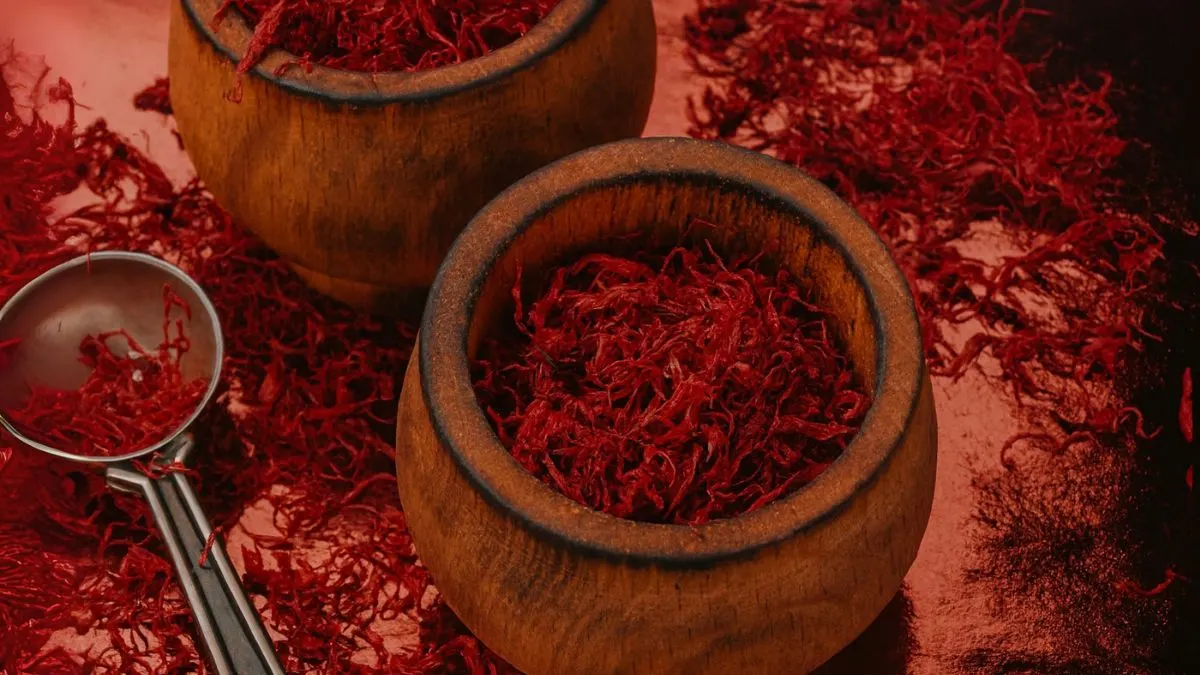Golden threads that can cost more than gold itself—yes, we’re talking about saffron, the most expensive spice in the world. Known as “red gold,” saffron has fascinated kings, chefs, and health enthusiasts for centuries.
But why is it so costly? The answer lies in its labor-intensive harvesting and centuries-old cultural significance. I still remember the first time I saw saffron strands added to a warm glass of milk at my grandmother’s house. The color was magical, and the aroma unforgettable.
What is Saffron?

Saffron is derived from the Crocus sativus flower. Each flower produces only three tiny red stigmas, which must be harvested by hand. It takes around 75,000 flowers to make just one pound of saffron. No wonder this spice commands such a high price.
Why is Saffron So Expensive?
- Labor-Intensive Harvesting: Harvesting saffron is backbreaking work. Workers must carefully pick each flower at dawn to ensure freshness, then hand-pluck the stigmas.
- Low Yield Per Flower: Each crocus flower offers just a few strands, which means large-scale farming is nearly impossible.
- Geographical Dependence: True it grows only in specific regions such as Kashmir (India), Iran, Spain, and Greece. The delicate flowers thrive in cold, dry climates.
- Demand and Prestige: From Mughal emperors in India to Michelin-star chefs in Europe, it has always symbolized luxury, flavor, and status.
Global Appeal
Though it is originated in the Mediterranean and parts of Asia, it’s now loved across the globe.
- In India, it flavors biryanis, kheer, and traditional sweets.
- In Persia, saffron rice is a cultural centerpiece.
- In the USA and Canada, it is now trending in gourmet kitchens and health supplements.
This global demand pushes prices even higher.
Also Read: 8 Plants That Perfectly Mimic Animals—#3 Is Wild!
Nutritional and Health Benefits
It is not just about taste and luxury—it’s packed with wellness benefits.
- Rich in antioxidants – Protects cells against free radicals.
- Boosts mood – Studies suggest it helps combat mild depression.
- Improves memory – Linked to better cognitive health.
- Supports digestion – Traditionally used for soothing stomach issues.
No wonder t is being called the spice of both pleasure and health.
Culinary Uses
One of the most unique aspects of saffron is its versatility. A single strand can elevate an entire dish.
- Indian Cuisine: From Kashmiri kahwa tea to creamy kulfi desserts.
- Middle Eastern Cuisine: Adds depth to Persian stews and pilafs.
- European Cuisine: Spanish paella and Italian risottos use saffron for its rich flavor.
- Modern Kitchens: Chefs in North America use it for cocktails, gourmet desserts, and even ice creams.
Why Saffron Costs More Than Other Spices
Spice |
Price per Pound (Approx.) |
Reason for Cost Difference |
Saffron |
$500–$5,000 |
Labor-intensive, low yield, high demand |
Vanilla |
$200–$400 |
Orchid-dependent, limited regions |
Cardamom |
$30–$50 |
Climate-sensitive but higher yield |
Cinnamon |
$10–$20 |
Easier cultivation and harvesting |
This clearly shows why saffron has long been the world’s costliest spice by weight.
Also Read: Don’t Buy Cauliflower Again! Grow It From Seeds Like a Pro
How to Avoid Fake Saffron
Because of its high value, it is often adulterated with colored threads or mixed with turmeric. Here’s how you can ensure authenticity:
- Look for deep red threads with orange tips.
- Smell the aroma—authentic one smells sweet and earthy.
- Do the water test—pure saffron releases color slowly, while fake one bleeds instantly.
- Buy from trusted sources—whether in India, the USA, or Canada, always check certifications.
Personal Experience
Whenever I cook biryani, I add a few strands of saffron soaked in warm milk. Not only does it enhance the flavor, but it also brings a festive touch to the meal. To me, it isn’t just a spice—it’s a memory of family gatherings, festivals, and celebrations.
Future of Saffron Farming
With rising global demand, scientists are exploring sustainable farming techniques, including greenhouse cultivation. However, the uniqueness of natural saffron grown in Kashmir or Iran will always remain unmatched. Some startups in Canada and the USA are experimenting with indoor saffron cultivation to reduce dependency on imports. This shows how valuable and irreplaceable it is in today’s market.
To sum up, saffron is the most expensive spice in the world—not just because of its rarity but because of its cultural, culinary, and medicinal value. From India to Europe and North America, it has become a symbol of luxury and tradition.
So next time you see those tiny threads in a jar, remember the incredible journey behind them: from thousands of hand-picked flowers to your kitchen. Truly, saffron is “red gold.”






